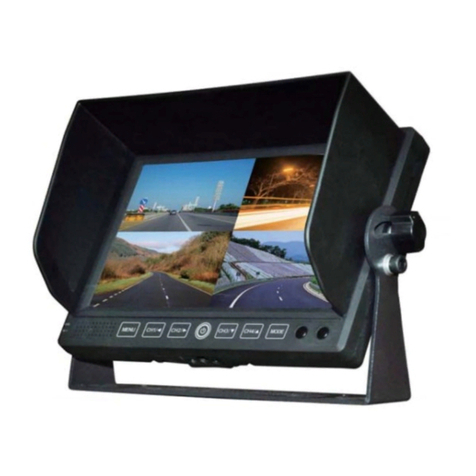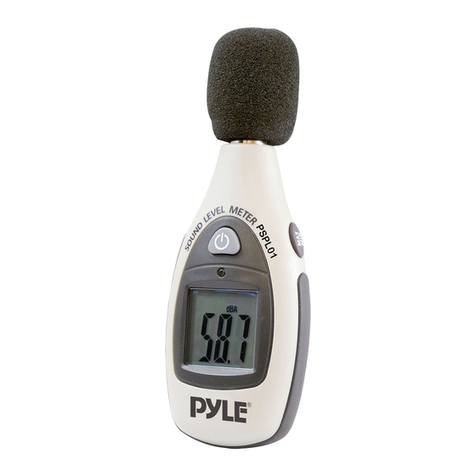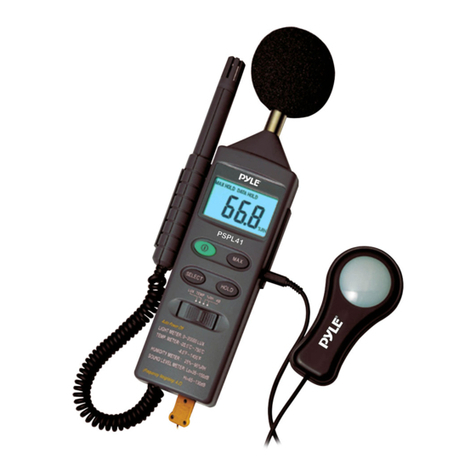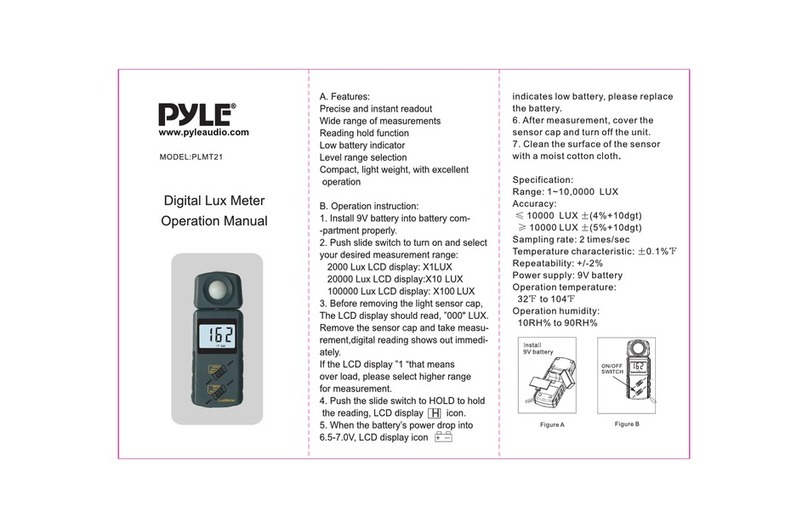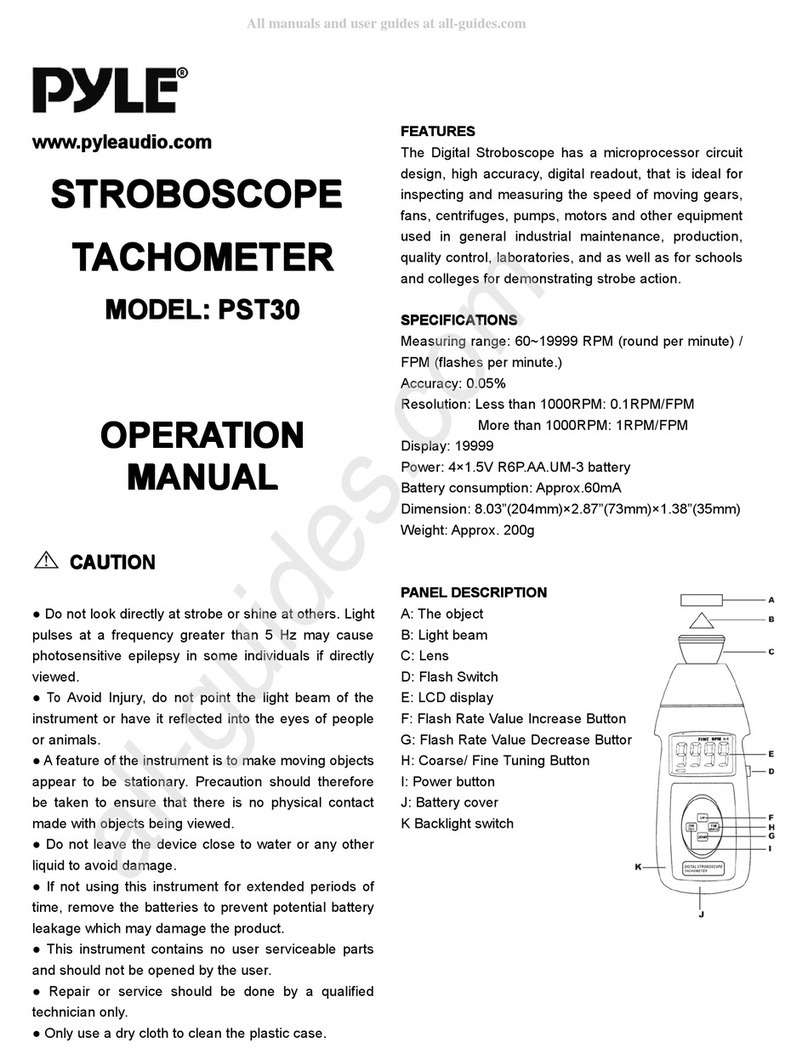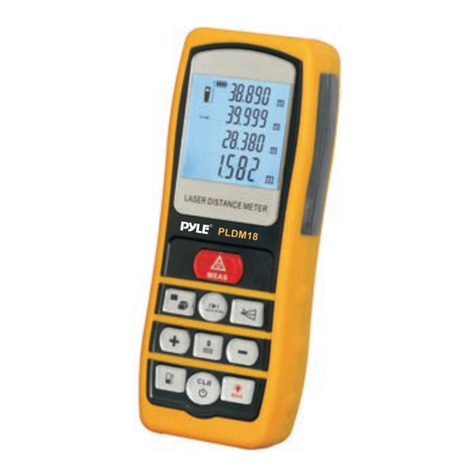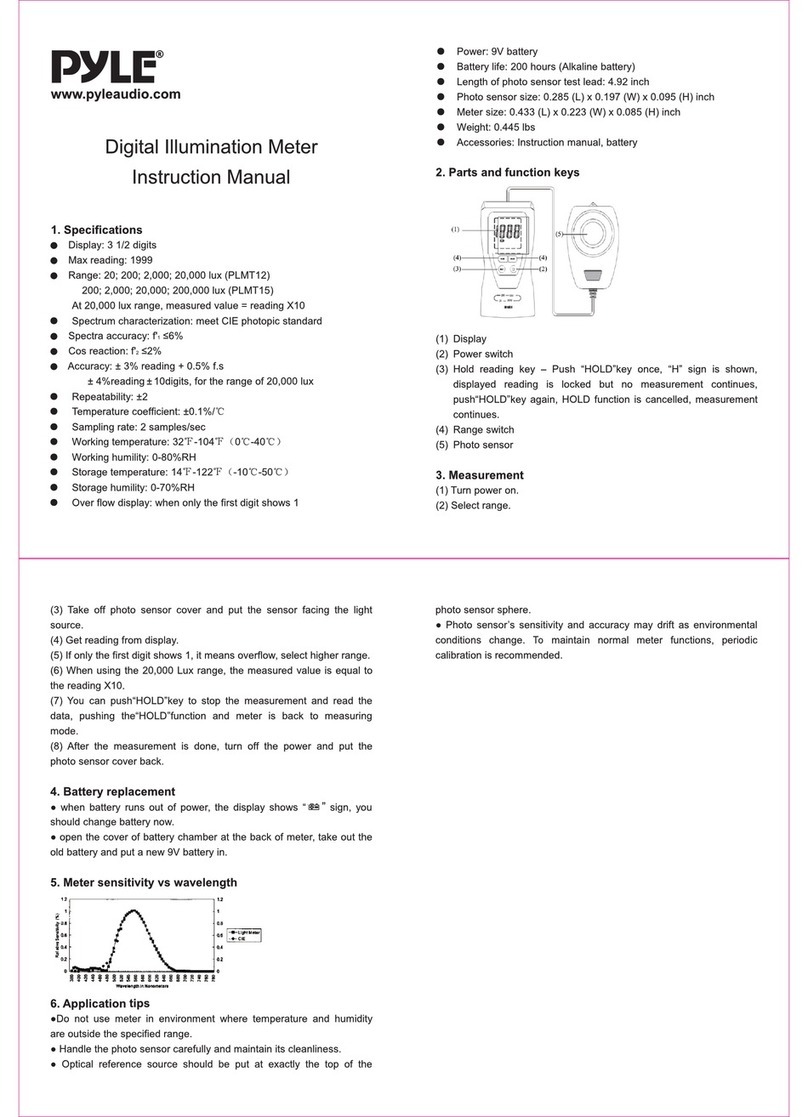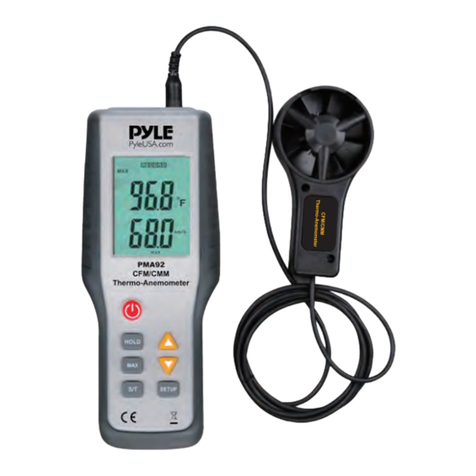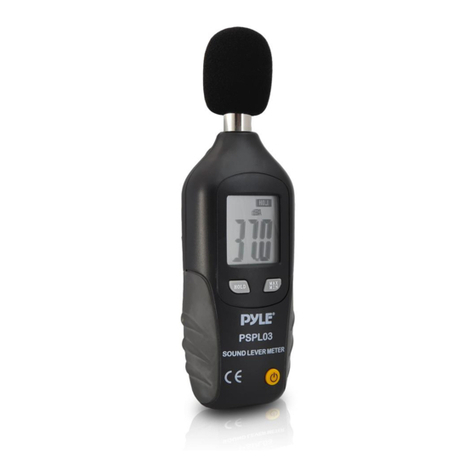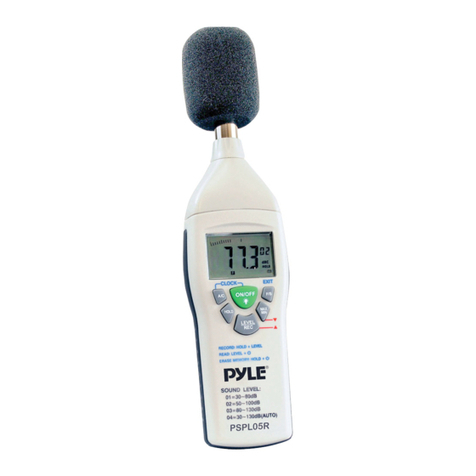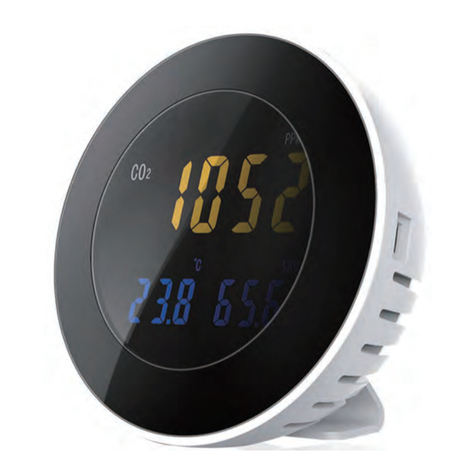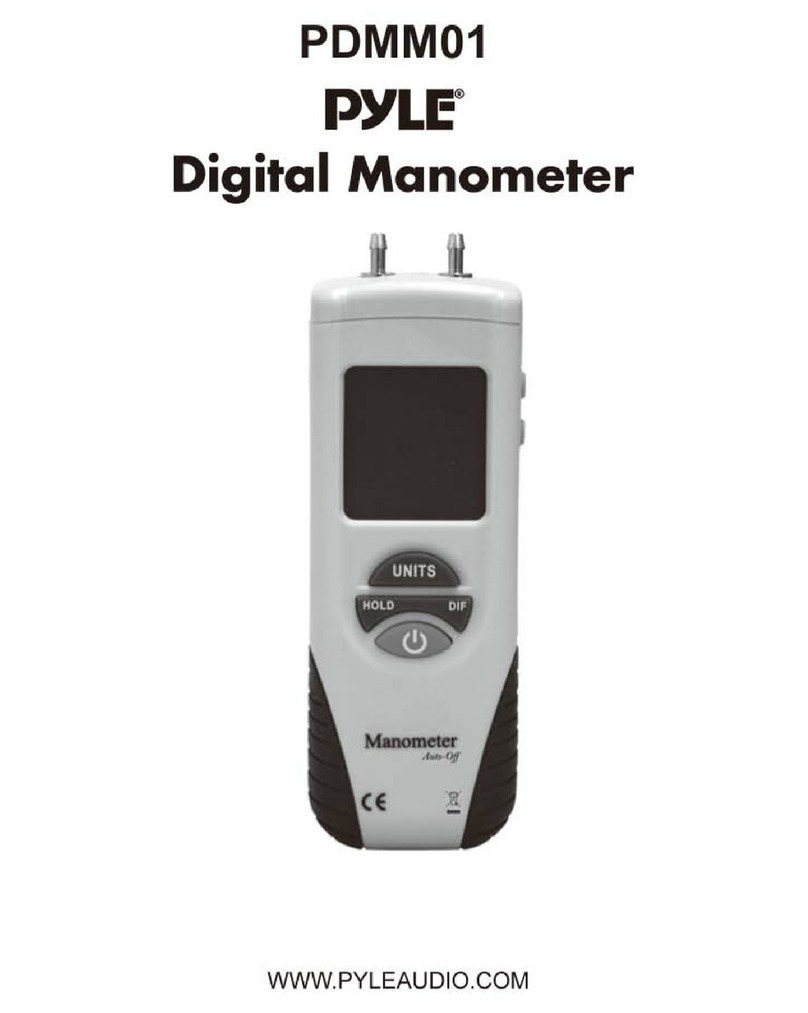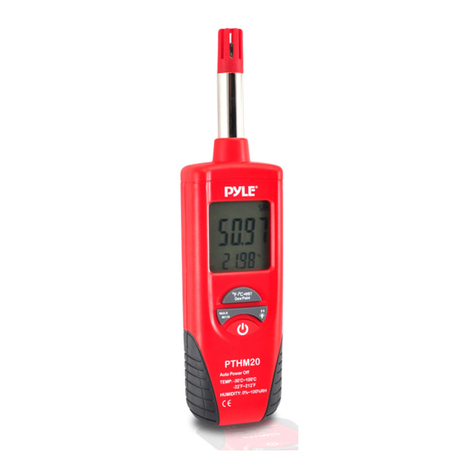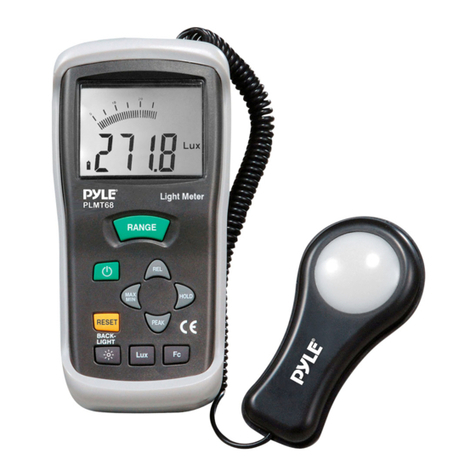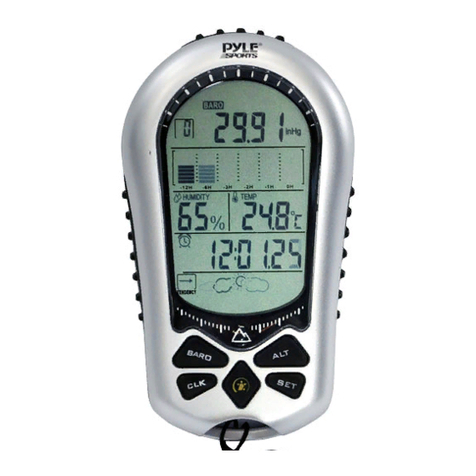
www.PyleUSA.com www.PyleUSA.com
CARBON MONOXIDE METER
INSTRUCTION SHEET
INTRODUCTION
The Carbon Monoxide Meter detects the presence of carbon monoxide (CO)
and measures concentrations between 1-1000 parts per million (PPM).
The Meter indicates the presence of carbon monoxide in two ways:
• By a reading the LCD in PPM.
• By a beeper tone.
Safety Information-Read First
• Do not use the Meter as a personal safety monitor.
• Learn and recognize the effects of CO poisoning.
What the Meter Does
The Meter indicates the presence of CO by a reading the LCD and by beeper
tone.
The beeper function is much like clicking a Geiger counter:
• Above 200 PPM, the beeper sounds continuously with the concentration of CO.
• From 35 PPM to 200 PPM, the beeper sounds discontinuously with the
concentration of CO.
Specications
INSTRUMENT FAMILIARIZATION:
1. CO sensor
2. LCD Display
3. MAX Hold button
4. Data Hold button
5. Back-light button
6. Power button
7. Battery door
DATA HOLD
The Data Hold function allows the meter to "freeze" a measurement for later
reference.
1. Press the DATA HOLD button to "freeze" the reading on the indicator.
The indicator "HOLD" will appear in the display.
2. Press the DATA HOLD button to return to normal operation.
MAX HOLD
To hold the highest reading on the LCD, press the MAX hold button. The MAX
hold button is located on the left side of the meter (bottom button). The
meter reading will not change as readings change, rather it will only display
the highest reading encountered since the MAX hold button was pressed.
Press the MAX hold button again to return to normal operation.
BACKLIGHT BUTTON
1. Press the "BACKLIGHT" key, the "light" will appear in the display.
2. Press it again and the "light" will close.
POWER BUTTON
1. Press the power button to turn on
2. Press the power button again to turn off
BATTERY REPLACEMENT
1. If battery power is not sufficient, LCD will display “ ” replacement with
one battery type 9V is required.
2. Open battery cover, then take out the battery and replace with a new 9-Volt
battery and put back the battery cover
0-1PPM
9 PPM
50 PPM
100 PPM
200 PPM
800 PPM
*U.S. Department of Labor, Occupational Safety & Health Administration
(OSHA) Regulation 1917.24: The CO content in any enclosed space shall be maintained
at not more than 50 PPM (0.005%). Remove employees from enclosed space if the CO
concentration exceeds 100 PPM(0.01%).
Normal background levels
ASHRAE Standard 62-1989 for living areas.
OSHA enclosed space 8-hour average level*
OSHA exposure limit*
Mild headache, fatigue, nausea and dizziness
Dizziness, nausea and convulsions
Death within 2 to 3 hours
Temperature
Operating:
Storage:
Operating humidity
Measurement range
Measurement Resolution
Accuracy
Warm up period
Battery
Auto power o
Sensor type
Typical sensor life
0-99% Relative humidity (non-condensing)
O to 1000 PPM
1PPM
5% or 10 PPM
<2 seconds
9V, NEDA 1604A or IEC 6LR61, or equivalent
Meter automatically shuts down after 15 minutes
of inactivity
Stabilized electrochemical Gas-specic (CO)
3 years
32°F to+ 122°F
-86°F to + 140°F












